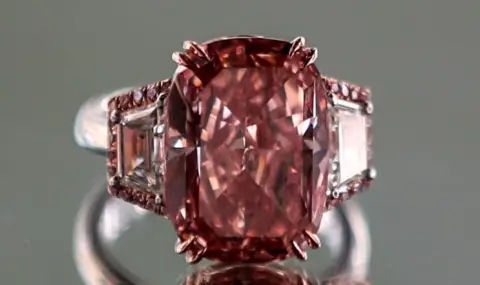The restrictions on the import of Russian diamonds by weight of 0.5 carats, as well as synthetic diamonds in the G7 countries and the EU entered into force on September 1. Experts note that the ban will create a “ripple effect” in the global diamond market.
On January 1, 2024, restrictions on the import of Russian diamonds and polished diamonds weighing 1 carat or more into the G7 countries and restrictions on the supply of diamonds to the European Union came into force. From March 1, 2024, diamonds over 1 carat cut from Russian diamonds in third countries were banned for import into the EU and G7. The embargo is now being expanded to include rough and polished diamond products from Russia weighing 0.5 carats, as well as synthetic diamonds.
Strategy Director of Finam investment company Yaroslav Kabakov notes that the ban on the import of Russian diamonds and the complication of the document circulation procedure will definitely create a “ripple effect” in the global diamond market. “A rise in prices, a reduction in supply and dynamics of supply diversion are expected. Companies will be forced to adapt to the new conditions, which may temporarily slow down their activities, he believes, quoted by ag. TASS.
Experts recalled that the EU previously postponed the introduction of a mandatory system for tracking the import of rough and polished natural diamonds of Russian origin into the countries of the community for 6 months, until March 1, 2025. The system was supposed to be operational on September 1, 2024 “The introduction in March of a system for tracing the origin of diamonds will only increase the pressure on the market, increasing the need for transparency and compliance with the new standards”, Kabakov believes.
Boris Krasnozhenov, Head of the Securities Markets Analysis Department at Alfa Bank, believes that there is still no answer to the question of how a diamond certification system can be technically organized on a global level. “Using digital technology to certify diamonds is an expensive project that will take several years to complete. The proposed certification processes will inevitably lead to increased costs for manufacturers. Assuming that a number of countries will refuse to use Russian diamonds and polished diamonds produced in Russia, then Russian stones can be sold in markets where there will be no restrictions against Russian suppliers,” he said.
According to Krasnozhenov, the sales capacity of these markets allows to sell volumes of diamonds mined in the Russian Federation. "It should be noted that final demand for diamond jewellery, although slowing or declining in some regions, remains above pre-pandemic levels, while global diamond production has fallen by 20% due to a depleted resource base," he added. Kabakov also noted that in the long term the market will adapt to the changes, which can stimulate the introduction of new technologies and the search for more sustainable solutions in the mining and production of diamonds.
